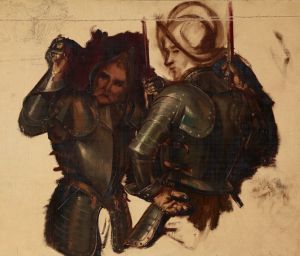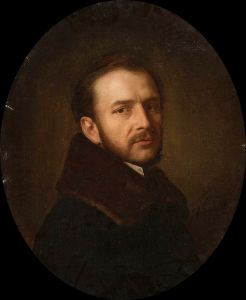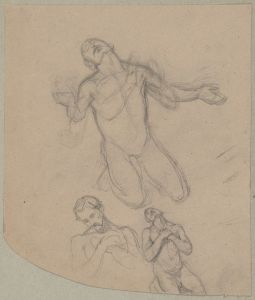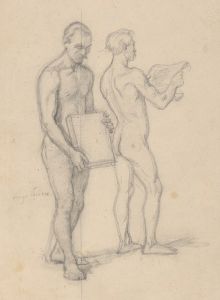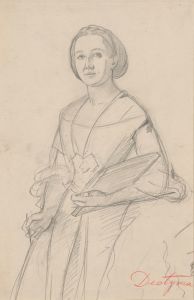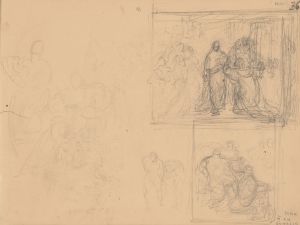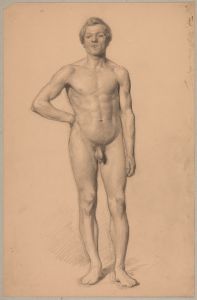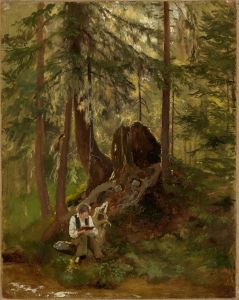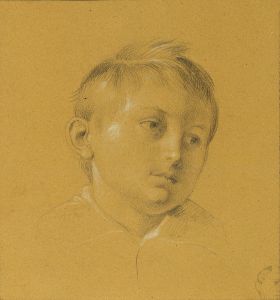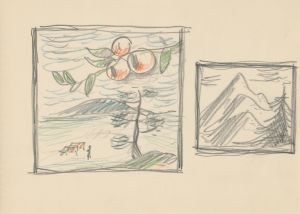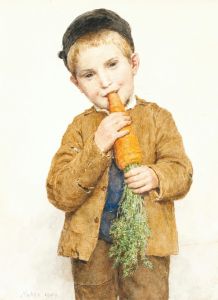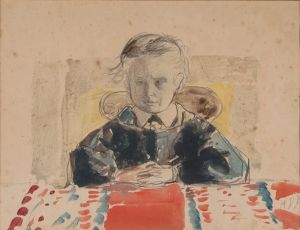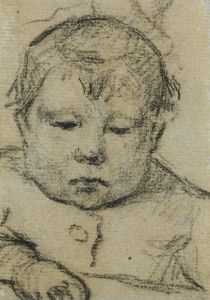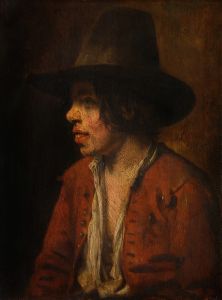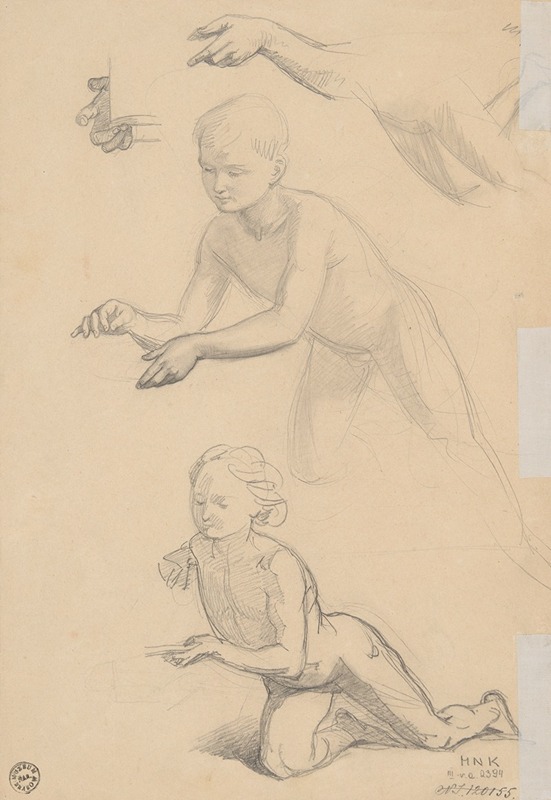
Two sketches of a nude boy
A hand-painted replica of Józef Simmler’s masterpiece Two sketches of a nude boy, meticulously crafted by professional artists to capture the true essence of the original. Each piece is created with museum-quality canvas and rare mineral pigments, carefully painted by experienced artists with delicate brushstrokes and rich, layered colors to perfectly recreate the texture of the original artwork. Unlike machine-printed reproductions, this hand-painted version brings the painting to life, infused with the artist’s emotions and skill in every stroke. Whether for personal collection or home decoration, it instantly elevates the artistic atmosphere of any space.
Józef Simmler, a prominent Polish painter of the 19th century, is known for his contributions to the Romantic movement in Poland, particularly through his historical and genre paintings. Among his works, "Two Sketches of a Nude Boy" stands out as an example of his skill in capturing the human form with sensitivity and precision.
Simmler was born in 1823 in Warsaw, which was then part of the Russian Empire. He studied art in Dresden, Munich, and Paris, where he was influenced by the techniques and styles of European masters. His education and exposure to different art movements equipped him with a diverse skill set, which he applied to his works upon returning to Poland.
"Two Sketches of a Nude Boy" exemplifies Simmler's adeptness in drawing and his understanding of anatomy. While specific details about the creation date of these sketches are not well-documented, they reflect the academic style prevalent during his time. The sketches likely served as studies for larger compositions or as exercises in mastering the depiction of the human body, a common practice among artists of the period.
The sketches depict a young boy in two different poses, showcasing Simmler's ability to render the human figure with realism and attention to detail. The use of light and shadow in these sketches highlights the contours and musculature of the boy's body, demonstrating Simmler's proficiency in chiaroscuro—a technique that creates a strong contrast between light and dark areas to give the illusion of volume in modeling three-dimensional objects and figures.
Simmler's work, including these sketches, is characterized by a meticulous approach to detail and a commitment to realism. His ability to convey emotion and narrative through his subjects is evident, even in these simpler studies. The sketches not only display his technical skills but also provide insight into the artistic processes of the time, where preliminary sketches were essential in the development of more complex compositions.
Throughout his career, Simmler was celebrated for his historical paintings, such as "Death of Barbara Radziwiłł," which remains one of his most famous works. However, his sketches and studies, like "Two Sketches of a Nude Boy," offer a glimpse into the foundational practices that supported his larger, more elaborate pieces.
Simmler's contributions to Polish art were significant during a period when Poland was under partition and cultural expression was a form of national identity and resistance. His works are preserved in various collections, including the National Museum in Warsaw, which houses many of his paintings and sketches, ensuring that his legacy continues to be appreciated by future generations.
In summary, "Two Sketches of a Nude Boy" by Józef Simmler are valuable pieces that reflect the artist's skill in drawing and his dedication to the study of the human form. These sketches are an integral part of understanding Simmler's artistic journey and the broader context of 19th-century Polish art.





